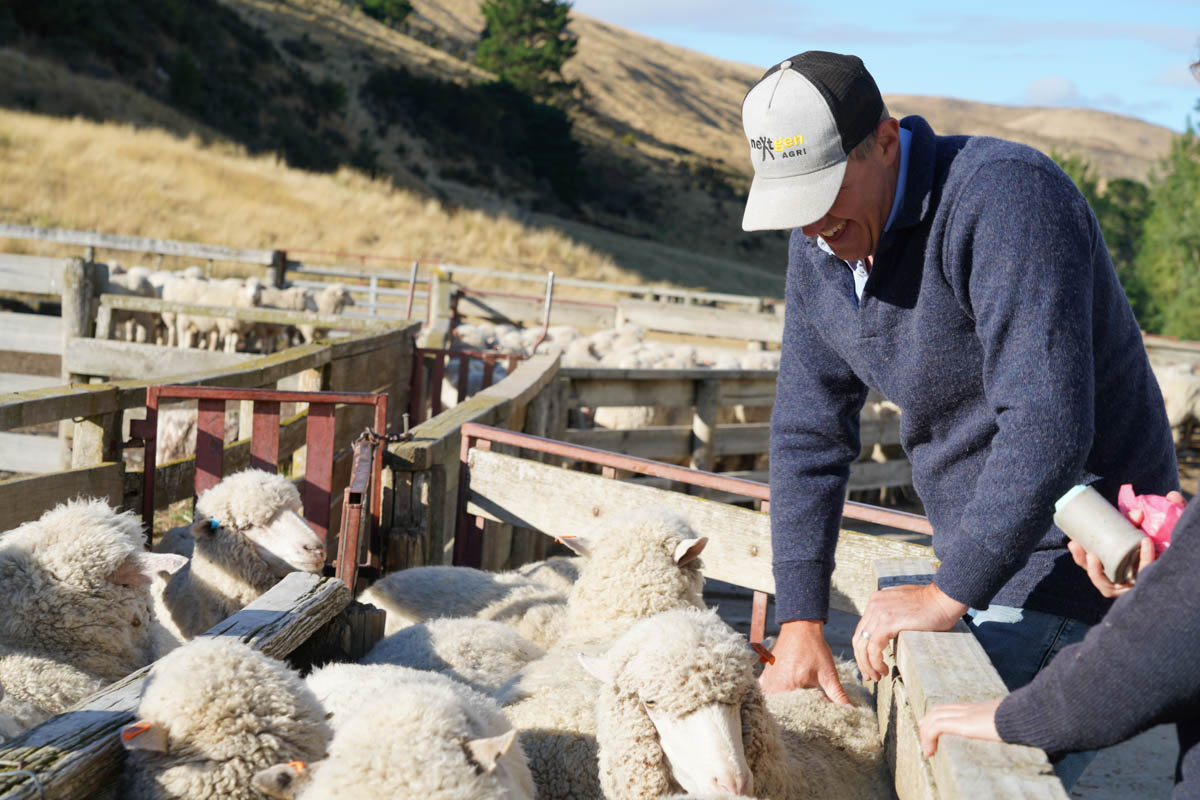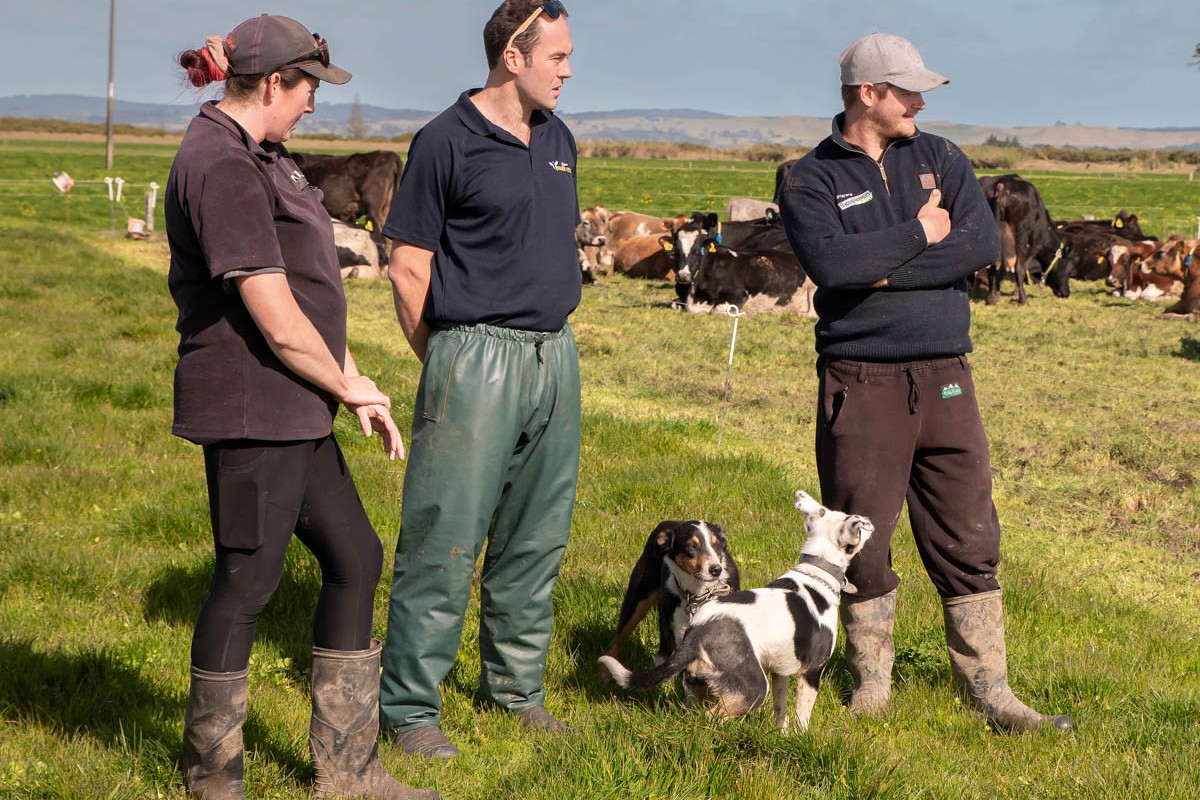Reducing stock losses has marked progress on Tiniroto’s Raukura Station in the last two years. Russell Priest reports.
Raukura Station has continued to make impressive progress since it last appeared in Country-Wide, January, 2017.
In its 2018 financial year the Gisborne station achieved an EFS of $426/ha compared with the average of $403/ha.
This was largely the result of gross income being 41% ahead of the previous year ($1095/ha vs $774/ha) and above the district average of $1026. Driving this was a high stocking rate (9.4su/ha) and high stock performance resulting from more, better-quality feed being grown and utilised. This in turn was the result of spending more on fertiliser, subdivision and provision of stock water.
The Tiniroto station has now exceeded the average economic farm surplus (EFS) of the AgFirst Consultants Gisborne database of farms.
Its annual analysis captures the financial returns from a cross section of 160 farming types and contours, making Raukura’s performance even more impressive considering it is a hill country, breeding farm. The former Gisborne Monitor Farm is owned by the Hewetson sisters, Anne, Debbie and Vicky and managed by Stu Helm.
One of the greatest achievements over the past two years has been the reduction in stock losses from 7% to 2% for sheep and 0.9% for cattle. This was achieved through an improved boundary fence and management. The stock loss compares with 2.5% and 1.3% respectively for the average of the top 10% of farms in the analysis.
Sheep numbers have remained largely unchanged on Raukura, but the sale returns of individual stock classes have improved significantly. They are now zeroing in on the average of the top 10% ($125/head vs $137/head). This improvement has driven sheep and wool income up to $136/su beyond that achieved by the district average of $133/su).
Raukura falls behind the average on expenditure ($669/ha vs $623/ha), reflecting its ongoing development programme compared with many of the analysis farms which are fully developed.
Farm working expenses are close to the top 10% ($34.20/su vs $34.32/su). However, repair and maintenance expenditure is significantly greater ($29.27/su vs $17.97/su) reflecting the large expenditure on capital fertiliser ($16.49/su vs $10.01/su) and the establishment of tracks, dams and the water supply ($4.95/su vs $1.72/su).
“Once these programmes are finished and their benefits are fully realised, Raukura will be close to realising its potential,” former Monitor Farm chairman Chris Harris says.
The uncompleted reticulated water scheme has cost $60,000 but expected to be $100,000. It is one of the success stories in the development programme. The reticulated system is far superior to dams for stock water on Raukura because of the loss of water due to the porous nature of the pumice soil.
Helm says the scheme has turned non-grazed areas into grazed ones. He has noticed how cattle in particular are attracted to the better-quality water and he now has the flexibility of using all paddocks. Previously paddocks with dams that had been pugged by cattle could not be stocked with lambs for fear of them becoming stuck and drowning.
Cattle policy undecided
Cattle have not fared quite as well, however the financial comparison includes bull beef finishing farms which makes Raukura’s $96/csu a commendable result when compared with the district average of $92.60/csu.
Four hundred breeding cows are now calved on the station of which 100 – 120 are B herd animals mated to Simmental bulls. The balance are either mated to Angus or Hereford bulls depending on their markings – Hereford types are mated to Angus and vice versa thus maintaining a Hereford Angus-cross herd.
Some thought is being given to the idea of grading up to a maternal Simmental herd as Kerrah Simmentals.
Until two years ago, Raukura was mating heifers as two-year olds because of the need for a clean-up mob and a robust breeding cow. By mating heifers at 15 months it was felt both would be compromised.
However, a policy change means the best 60 of the 15-month heifers are calved. The cut-off weight for mating is 300kg. The in-calf heifers are not pampered and do their share of foraging on the hills over the winter.
The Simmental-cross heifers are once-bred while the Hereford Angus heifers are retained as herd replacements. Calving percentage this year was 71% (heifers to the bull/calves marked).
Few calving problems have been experienced. Heifers are calved on saved pasture behind a hot wire on the easiest-contoured part of the paddock. When calving is finished the hot wire is removed giving them access to the rest of the paddock.
The policy change two years ago to winter all weaners on Raukura’s hills and finish all steers and surplus heifers on Waimungu (Raukura’s finishing block) has now been largely implemented except that the best of the steers are now finished on Raukura. On October 1 the heaviest 30 15-month steers are drafted off and fed high quality pasture and killed in the autumn at 280-300kg.
The next heaviest 110 are sent to Waimungu and killed as two-year olds.
Hogget mating has continued using a cut-off mating weight of 40kg. Last year 400 went to half-sib ram lambs with 300 conceiving and generating 300 lambs at weaning. The aim is to get more ewe hoggets up to the 40kg mating weight and improve the number of hogget lambs produced.
Overall lambing percentage on the station was down to 127% last year due to the prolonged storm much of the east coast experienced during lambing. Romdale rams have now been completely replaced by Romneys from local stud St Leger.
Raukura has high soil potash levels and manager Stu Helm has been trialling a mineral drench to counter its effects on ewe health in late pregnancy. In the past the station has experienced a high incidence of bearings however since using this drench the problem appears to have disappeared. The suggested explanation is that the high potassium levels have been interfering with the ewes’ calcium metabolism.
In the early years of the development programme it was determined correcting the phosphate (P) and sulphur (S) deficiencies would deliver better bangs for bucks than correcting the pH.
Now that P and S are at reasonable levels, the decision has been made to apply lime at two tonnes/ha over 250ha of the easier country at a cost of $320/ha. The results may answer the question of whether the high aluminium levels in the pumice soils are locking up phosphate.
A total of 900ha of the station will also receive 25kg P and 31kg S per hectare.
KEY POINTS
- Raukura station’s gross income hits $1100/ha.
- Astute capital expenditure on fertiliser, fencing and infrastructure.
- New water reticulation scheme a success story.
- Massive improvement in stock performance.
- Large financial increase in individual livestock returns.
- A top management team.




